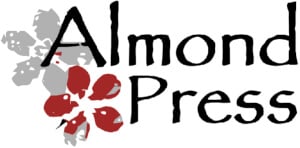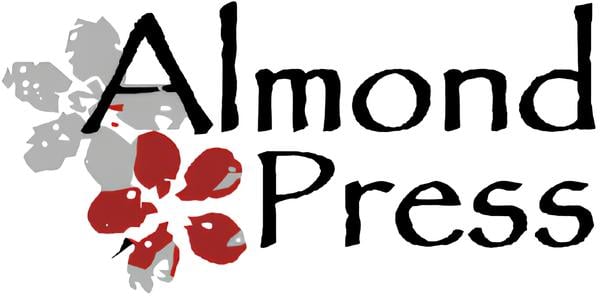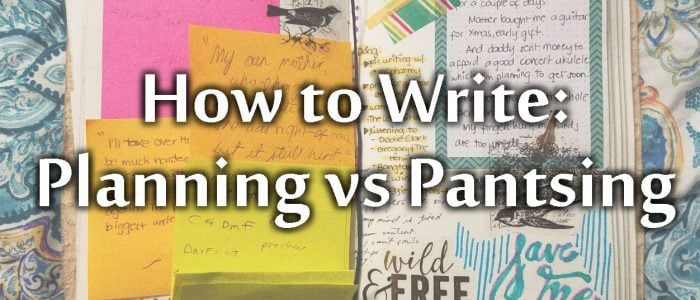How to Write: Planning vs Pantsing
You may have heard the terms “Planner” and “Pantser” in relation to how you write. A planner is fairly obvious; you plan the story out before you write it. A pantser simply flies by the seat of their pants; they have no idea what’s going to happen, and they’re making it up as they go along!
The two types of writer tend to be fairly opposite, and frankly, it’s quite hard to understand the other type if you fall firmly into one category. I’m a Pantser and for me, planning sucks all the joy out of writing – why would you want to know what happens? How can you keep so much in your head? Doesn’t it get boring? But to Planners, I’m a nightmare – how can you write a book if you don’t know where it’s going? How do you keep a plot on track? Surely it just ends up as an unfinished mess?
Well – both methods are valid ways of writing! It’s whatever works for you.
How to be a Planner
The outline
So, to start, you need a beginning, middle, and end: the basic outline of your plot. Where do your characters start from, what happens, and what’s the ending (of this book)?
Chapters
Next, what are the major events of each of those sections? This is the point you lay out chapters (or large sections), and if you’re using something like Scriviner, use the corkboard. You need a one-sentence description of that chunk: “The chapter where he fights the Big Baddie and discovers who his father is”.
Scenes
Then drill down further. What scenes would that section or chapter contain? What are the plot points, and how would you get from A to B? Who’s involved? The detail at this point means you can start doing logistics – if you need a character in this scene, are they also fighting a battle at the same time? If a character already knows something, would they do that scene?
Details
This is where you follow all of your threads through and ensure they’re all in place. If you’ve got a big reveal or a mystery at the end, do you need anything mentioned or clued here? Have you got enough meetings between the love interests for them to actually get to know each other? Does the Big Baddy reveal enough of the plan? What details do you need to put in at each point to make sense later?
And then you write. You’ve got the plan so you just write each scene, section by section, chapter by chapter, and then – bingo! Completed story!
How to be a Pantser
Start with one scene. X character doing Y thing in Z place. So, how did they get there? And what’s going to happen next?
And then you write.
Seriously. That’s it.
Pantsing works if, like me, you’re a character writer. I get snatches of dialogue turning up in my head. I get characters doing stupid things – I might have no idea how they’re going to get to that point, but I write the scene anyway! You can jump around, add characters, change place. You write whatever comes into your head.
You don’t even have to worldbuild if you don’t want to. Make it up. Throw things in. Magic and technology, why not? Fairytales and grimdark, sure. Chuck in a robot. Send them into space. Add a vampire. Throw in a car crash. If you know the outlines of your world then that’s brilliant, but you’ll often find that with pantsing, you get ‘clues’ as you go – your character just did something, which means there’s something else in the world. Hey, that works…
I usually end up with scattered scenes and chunks, and then I slowly join them up and fill in the gaps. How did that person get from there to there? If they’ve just pissed off X, now what? You can even add notes to yourself – “dramatic escape scene here” and then write the conversation afterwards.
This approach does tend to lead to a very scatty first draft, but that’s fine; it’s ideas on a page. As Pratchett says, “The first draft is just you telling yourself the story.”
For pantsers, your second draft will be the one where you bring out the story that you have found yourself telling. You’ll probably throw out quite a few scenes, or amend them (make sure you save ones that you haven’t used, though – I find they’re fun for short stories). You’ll refine and re-route and slim down.
The thing I love about pantsing is the surprises. I don’t know what’s going to happen. I can’t predict the conversations. And it means I’m not forcing the characters – they’re able to go their own direction. I had two of them fall in love at one point, turning a mildly cliche fairy tale into a gay romance that I think is just adorable; not planned, not scripted, just straight from what my subconscious thought the interaction should do. Sure, you’re occasionally throwing things in the mix – a problem here, an enemy there, a solution here – but it’s not planned. You don’t know what’s going to happen until you write it.
That’s the power and the charm of pantsing – you’re just following the story your characters want to tell.
Plantser
This is the halfway house, which I admit is what I tend to go for these days. (Don’t ask about the horrible mash-up. It’s a NaNo term).
I outline some of the story, as far as I can – I usually know where the characters start from and their setting. I know some of the problems. I’ve usually got some sort of a plan, ish; I might have a vague ending in mind, but it could change.
And then I start writing. There’s room for change. There’s room for manoeuvre. I don’t really know what the ending is, and I don’t know most of the journey – I’ve just pushed my characters out into a sea of problems and plot, and I follow along to see how they do. It’s the best (and worst) of both worlds, but it’s what works for me.
But Planner or Pantser; whichever method you choose, if it works for you – then go for it!
Green Sky & Sparks
by Kate Coe
- What is a writing competition? Why should I pay to enter? - November 15, 2018
- How to Write the Book Introduction to Hook Your Reader - October 7, 2017
- How to Write: Self-Publishing Your Work Online - October 1, 2017



